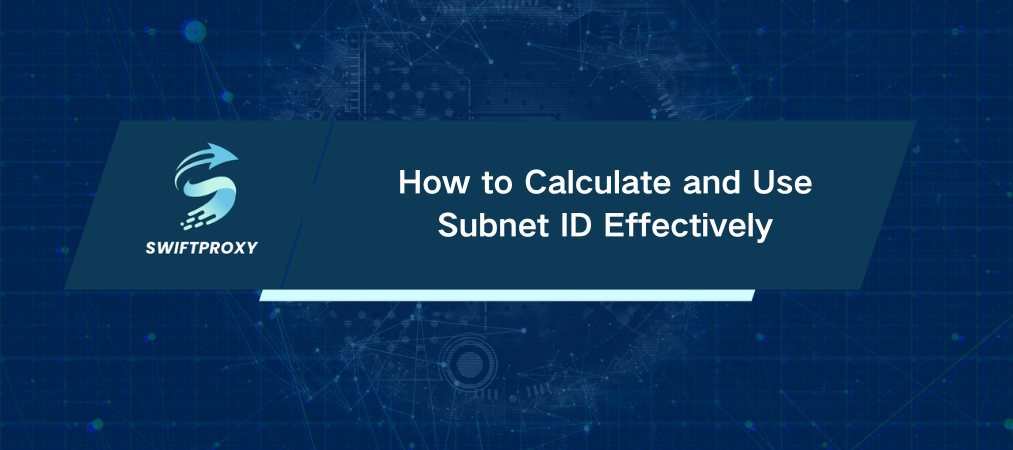How to Calculate and Use Subnet ID Effectively

More than 4.9 billion devices connect to the internet today. That's billions of conversations happening all at once. But how does all this traffic flow smoothly without chaos? The secret weapon: subnetting.
Subnetting breaks huge networks into smaller, manageable pieces. It's the invisible framework making the internet—and countless private networks—work efficiently, securely, and reliably.
What Is a Subnet and Why Should You Care
Think of a subnet as a neighborhood inside a massive city. The city is the entire network; the neighborhood is a subnet. Devices communicate by sending data packets, like letters in the mail, addressed by IPs. Subnets group these devices logically so data doesn't wander aimlessly.
Why does this matter?
Speed: Shorter paths mean faster delivery. Subnets cut down unnecessary traffic.
Security: Problems or attacks in one subnet can be contained, protecting the rest.
Control: Easier management and troubleshooting for network admins.
IP Efficiency: Allocating IP addresses thoughtfully prevents waste — crucial for tasks like proxy management or web scraping.
What Exactly Is a Subnet ID
A subnet ID is the label that identifies each smaller network inside a bigger one. It's part of the IP address—but not the whole story. Routers use subnet IDs to decide where data should go within a network.
Every IPv4 address is a 32-bit number split into four chunks called octets (like 192.168.1.50). Some of those bits represent the network, others the subnet, and the rest the individual device (host). This division is guided by the subnet mask.
Here's the breakdown of traditional IPv4 classes:
Class A: Uses the first octet for the network (e.g., 10.0.0.0). Supports around 16 million hosts.
Class B: First two octets are network (e.g., 172.16.0.0), supporting roughly 65,000 hosts.
Class C: First three octets are network (e.g., 192.168.1.50), supporting 254 hosts.
IPv6 changes the game completely. It uses 128 bits instead of 32, written in hexadecimal (like 2001:0db8:85a3:0000:0000:8a2e:0370:7334). It replaces classes with a flexible hierarchical system, allowing for vastly more devices on each subnet. For example, IPv6 subnets typically use 16 bits for subnet IDs, but 64 bits are available for hosts — that's 2^64 possible devices per subnet.
Subnet Masks and CIDR
A subnet mask separates network bits from host bits. For IPv4, 255.255.255.0 is common for Class C, meaning the first three octets define the network, and the last octet identifies hosts.
Quick formula:
Number of hosts = 2^N - 2
(where N is the number of bits for hosts, subtracting 2 for network and broadcast addresses).
If you need 254 hosts, you need 8 bits for hosts (2^8-2=254). That's your subnet mask: 255.255.255.0.
CIDR notation simplifies this further by writing the IP as 192.168.1.50/24. The "/24" means the first 24 bits are network bits, the rest hosts. For IPv6, CIDR is the only option—e.g., 2001:0db8:85a3::/64.
How to Find a Subnet ID Quickly
You can calculate subnet IDs by hand—convert IPs to binary, apply masks, do some math. But why torture yourself?
For IPv6, finding the subnet ID means zeroing out the host bits beyond the subnet prefix. For example, with a /64 prefix, you replace the last 64 bits with zeros.
Real World Example of Subnetting for Departments
Imagine you manage a network: 192.168.1.50/24 (256 IPs). You want to split it into four subnets—one for HR, finance, IT, and marketing.
How? Borrow 2 bits from hosts (because 2^2=4). New subnet mask: /26 or 255.255.255.192. Each subnet now supports 62 usable hosts.
Ranges look like this:
192.168.1.0 – 192.168.1.63 (HR)
192.168.1.64 – 192.168.1.127 (Finance)
192.168.1.128 – 192.168.1.191 (IT)
192.168.1.192 – 192.168.1.255 (Marketing)
Why bother?
Reduce broadcast traffic: Smaller subnets mean less noisy communication.
Boost security: Different access rules per department.
Simplify troubleshooting: Problems stay local, not network-wide.
Optimize IP use: No wasted addresses, easier future growth.
Resident Subnet IDs, Private Subnets & VLANs
The resident subnet ID is simply the subnet your IP "lives" in. You get it by applying the subnet mask to your IP and zeroing out host bits.
Private subnets use reserved IP ranges for internal use, invisible outside your network. They're not the same as VLANs, which operate at a different network layer and use MAC addresses instead of IPs.
Wrapping Up
Subnetting is more than a technical exercise—it's the backbone of efficient, secure, and scalable network design. Once you grasp subnet IDs, subnet masks, and CIDR, you gain real power to organize your network smartly.
Whether you're managing a small office or designing cloud infrastructure, subnetting provides flexibility and control. Explore subnet calculators and with practice, subnetting will become second nature.

















































